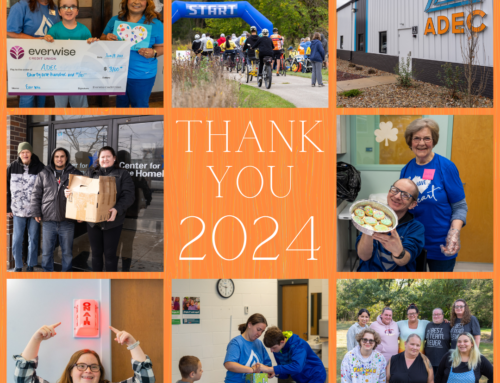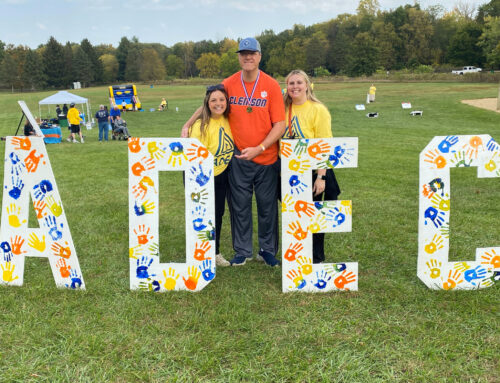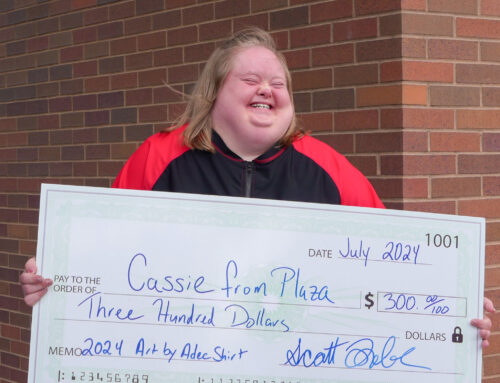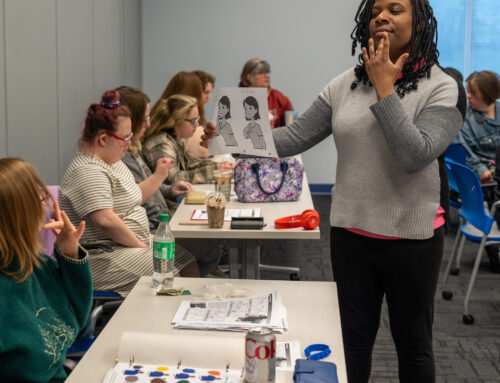The 12 finalist teams for the ADEC Technology Challenge 2.0 are working on deadline to complete their projects before the April 16 public presentations, each hoping to take home one of the top prizes. This sequel to last year’s successful 1.0 version will take place from 9 a.m. until noon at the Northern Indiana Event Center.
Cash prizes, 3D printers and printer kits will be awarded to the top teams. The Chris Gibson People’s Choice Award will go to the projected voted “best” by spectators at the challenge. Anyone who attends this free event and votes for the People’s Choice Award will be eligible to win a door prize.
Judges for the event include Bob Montgomery, WSBT news anchor; Kim Dodson, executive director for The Arc of Indiana; Sam Hooley and Fred Todd, ADEC direct support professionals; Ryan Murphy and Wally Nehls, engineers; Kevin Boyer from the ADEC Board of Directors, and John Dickerson, a consultant for disability issues; and Bob Troyer, parent of an ADEC client.
The Projects
Within the high school, college and professional divisions, 57 teams from five local high schools, three area colleges and universities and one maker group submitted detailed proposals for original assistive technology projects to assist people with an intellectual disability. In January, the finalist teams were selected based on the amount of independence a person with an intellectual disability would experience using their project, ease of replication, simplicity of operation and reliability, among other criteria.
“We look at if it’s a project they can actually finish on time,” Don Wierenga, ADEC assistive technology and adult habilitation director explained. “We’re also looking at cost; is it something we can use and replicate; having open communication so we can encourage the teams, saying, ‘If you can’t finish this, what can you do instead?’”
In the high school division, Wierenga and Carl Yoder, ADEC assistive technology project manager, noticed the curriculum in schools is geared toward combining design and manufacturing principles by having two students from each discipline on a team. Having this knowledge made it easier to understand what projects would be more likely to succeed in the competition. The selected projects and schools are listed below.
- The Gripper – Northridge High School
- The Grip-It – Northridge High School
- Sander – Marian High School (pictured above)
- Assistive Bowl – Northridge High School
- Adjustable Desk – Penn High School
- Navigation Mobile Application — Memorial High School
For the college division, Wierenga and Yoder took special note of projects involving research and using skills taught in a variety of classes. “They are learning to apply these skills to projects,” Yoder explained. All five teams selected came from the University of Notre Dame. Their projects include:
- The GoSleeve Communication Device
- guardIAN
- The Photo Station
- Power Flour Dispenser
- The Tracey
Within the professional division, a team from the MakerHive, a local group of engineers, tinkerers and mechanics who work together to build technological solutions and explore new applications, was chosen. Yoder commented on how this division gives professionals a chance to try something they may have thought of doing, but never had a chance before. The MakerHive project is titled Auto Drive.
The C hallenge
hallenge
From the time of selection until the event, the teams had three months to develop their projects while checking in with Wierenga and Yoder on specific dates to discuss progress and convey vital project information. Teams also have the opportunity to contact Wierenga and Yoder for advice at any point during the development process.
“The teams that did well last year are the ones who had a lot of communication with us, who asked a lot of ‘this or that?’ questions and then come in and test [their projects] out [with our clients],” Wierenga said.












